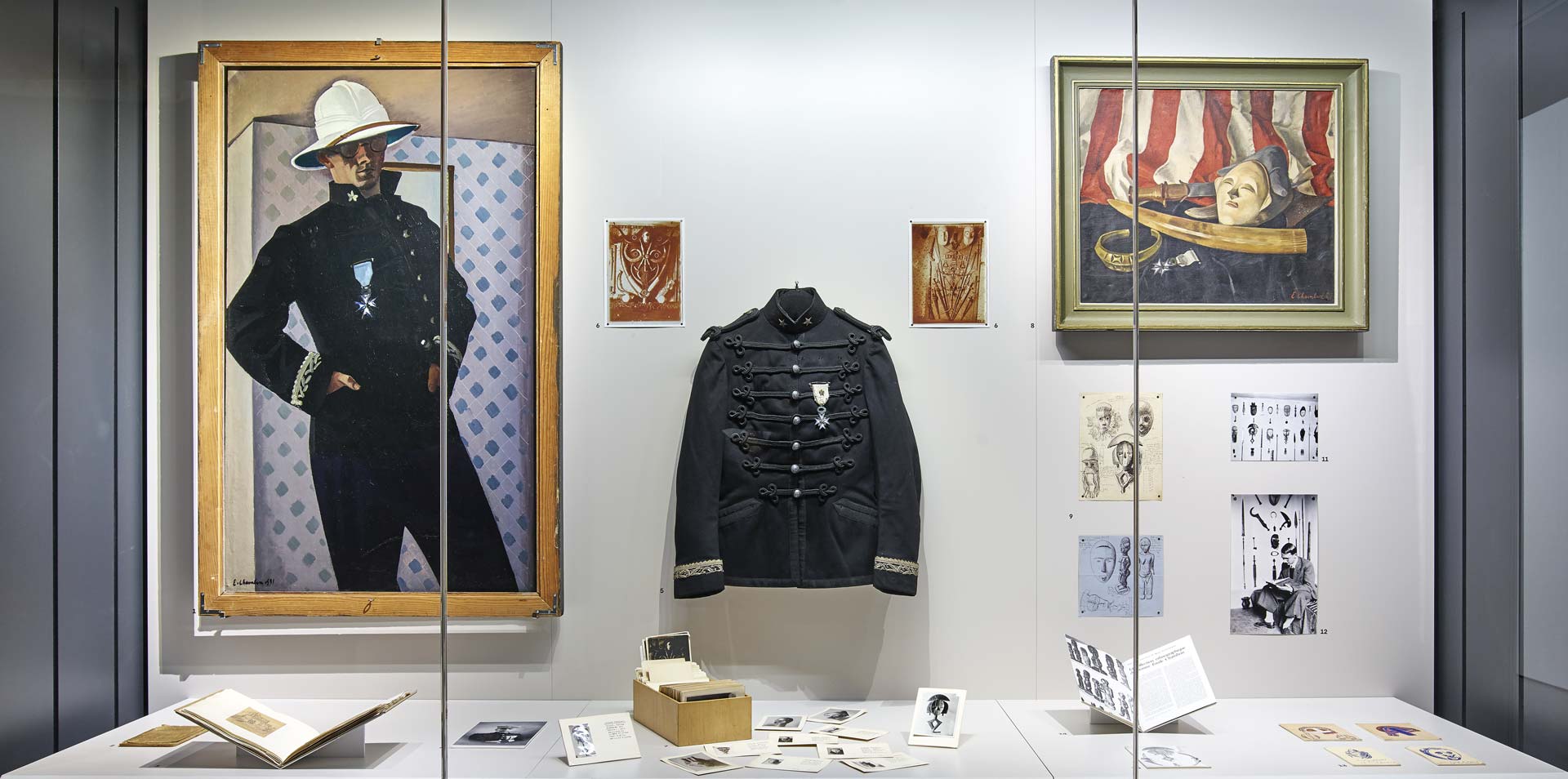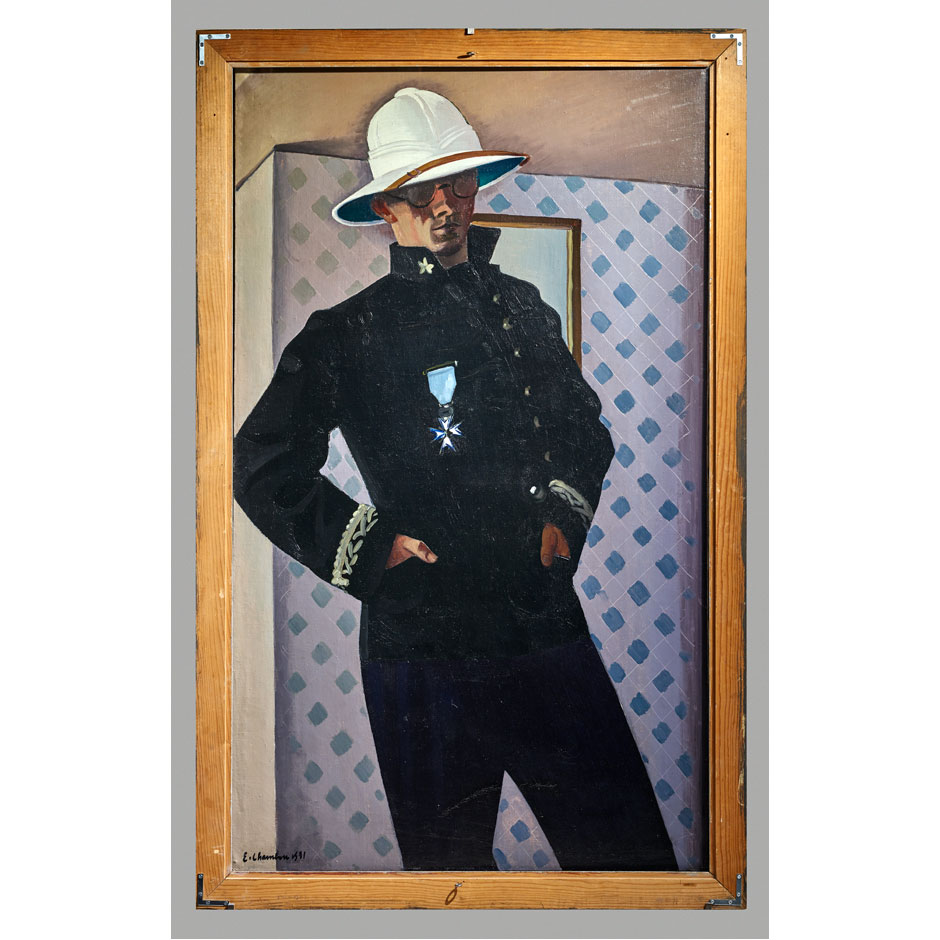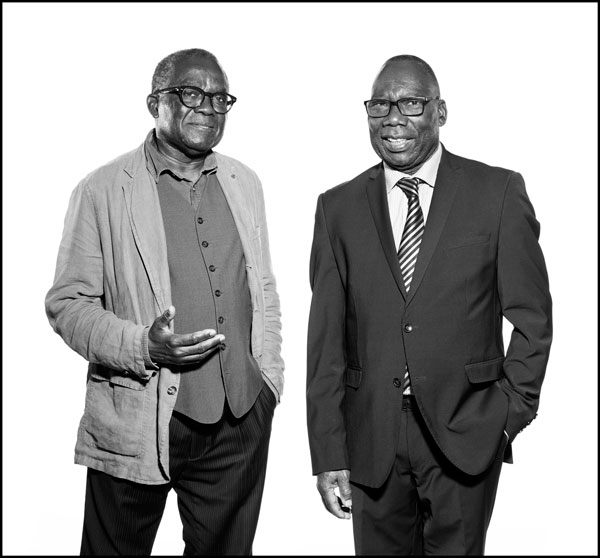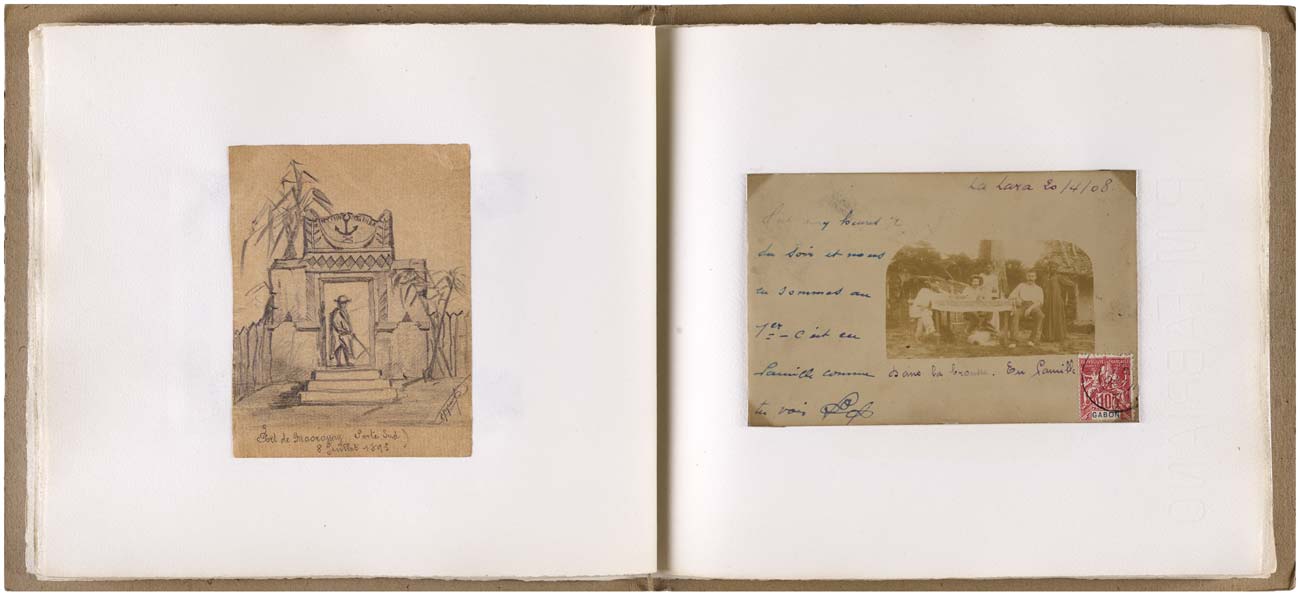Colonial Collections and Symbolic Violence
Colonial Collections and Symbolic Violence
The relationship between Jean-Didier Ekori, Jean Lignongo and the MEG developed around Kota reliquary guardians whom Lignongo and Ekori consider as ancestors. The MEG holds, exhibits, and publishes these guardians, highlighting their status as funerary objects. Yet during the colonial era, their status was reduced to mere fragments after being torn from the reliquaries they protected on another continent. Here, their life is limited to the silence of a museum reserve, the spotlights of a vitrine or a page in a catalogue.
Military conquests, colonial administration and the art market are the foundations of the «Émile Chambon Collection». This 20e-century artist first inherited this collection, which he then enriched, following his passion for primitivism. Documentary images and archives reveal the omnipresence of Kota reliquary guardians in the collection, but here it is through a “mirror” that these guardians finally tell their story, thanks to the voices of their cultural heirs from the Kota cultural area who have not forgotten them.
Floriane Morin/MEG


“That’s no Moon” [gesture 2]
Mathias C. Pfund. 2024
The [black]star of Benin (1931), self portrait of Emile Chambon wearing the clothes of his uncle François-Clément Coppier, a colonial administrator in French Equatorial Africa, oil on canvas, gift from Alain Glauser in 2018
MEG Inv. ETHAF 068775
MathiasCPfund. Insides Out [PDF 8 Mo]
François-Clément Coppier’s album
Colonial photographic prints and postcards of Gabon
Early 20th century.
MEG Inv. ETHPH 87.03
Symbolic Rehabilitation of Kota Reliquaries
The Kota figures selected for this exhibition carry the weight of the encounter between Europe and Africa. Torn from the reliquaries they guarded, they are direct witnesses to the symbolic violence exerted by colonialism and missionaries on local religions. The ancestor cult, characterized by devotion to the remains of deceased parents, is the Kota peoples’ fundamental religion. It is expressed in the removal and preservation of certain bones belonging to the lineage’s elders. This explains their veneration of N’kobe (baskets) and guardians of reliquaries. The latter are at the centre of the rites which call on the ancestors’ spirit. Today we can reestablish the place of reliquaries, by showing that although the carved figure was recognized for its artistic quality, the reliquary baskets on the other hand, burnt, thrown away or hidden in the forest, represent a loss for the Kota. J.-D. Ekori and J. Lignongo

Jean-Didier Ekori et Jean Lignongo
Jean-Didier Ekori has a doctorate in Political Science (University of Dijon) and has conducted research on the impact of tourism on Bamoun art in Cameroon. Jean Lignongo has a doctorate in Geography (University of Lyon II) and has worked as a teacher and urban developer. Researchers of Kota descent, for many years, they have been studying the culture of the peoples of the Congo Basin, particularly the Kota of Congo and Gabon.
©Photo Johnathan Watts/MEG
©Photo Johnathan Watts/MEG


































